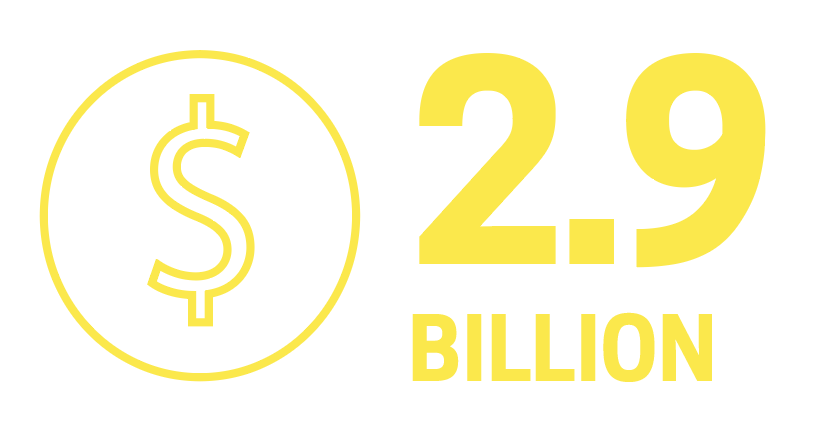Energy Transformation is Happening
The global energy sector is at a turning point.
Dramatic reductions in
the cost of renewables are enabling countries to think differently about meeting energy
demand, and are creating new opportunities and challenges. Progress on energy efficiency is
gaining momentum. Technological advancements in grid and off-grid solutions are enabling
countries to roll out more innovative plans to increase access to electricity. While
significant progress has been made, the 2017 Global Tracking Framework indicates
that the pace of this progress fell short of what is needed to meet the Sustainable Development Goal on energy (SDG7) that calls for access to affordable, reliable, sustainable and modern energy for all by 2030. Almost 10% of the world will still not have electricity access in 2030, while 28% will remain without access to clean cooking. Much more encouraging than the global trends, however, are the experiences of individual countries demonstrating the feasibility of moving faster toward sustainable energy objectives.
ESMAP focuses on:
Fixing sector fundamentals, including energy pricing: Helping energy suppliers become operationally effective and financially creditworthy, tackling weak governance, strengthening policy and regulatory frameworks, and reforming energy subsidies for improved sector performance.
Pursuing all energy supply options for sustainability: Supporting countries to transition to lower carbon and more resilient energy systems, with a focus on de-risking investments and integrating variable renewable energy into power grids.
Getting incentives and policy frameworks right for universal access:
Assisting governments to develop and finance sound, comprehensive grid and off-grid
electricity and household energy access programs that can leverage public and private
financing.
Prioritizing energy efficiency improvements: Working at the nexus of power, water, transport, buildings, industry, and urban development to help countries take policy action on regulatory standards and implement delivery and financing modalities for energy efficiency investments, particularly in cities.
Crowding in commercial capital and private sector solutions for delivery:
Assisting countries to develop and implement appropriate legal, fiscal, and
contractual frameworks, strengthen regulatory institutions, and adopt market-driven
principles to attract adequate commercial capital to meet their energy sector investment
needs.
FY2017 by the Numbers
The World Bank approved 41 new energy lending projects. 20 of these new projects, benefited from ESMAP support. Another 7 projects in other sectors were also influenced by ESMAP
ESMAP’s portfolio of advisory services and analytics informed US$6.1 BILLION in World Bank lending
ESMAP also leveraged approximately US$425 MILLION from other sources such as governments, other multilateral organizations, and the private sector
ESMAP initiated 95 NEW ACTIVITIES in 53 countries (excluding regional activities) and 10 GLOBAL ACTIVITIES, for a total of US$25.7 MILLION (excluding SIDS-DOCK — Small Island Developing States)
New Activities
- 15 in Energy Access for $3 million
- 26 in Renewable Energy for $7 million
- 21 in Energy Efficiency for $3 million
- 44 in Governance, Markets & Planning for $9 million
- 8 in Energy Subsidy Reform for $3 million
- 3 in SEforALL Knowledge Hub for $0.8 million
* Activities may include multi-thematic grants.
FY2017 Approvals, Grant Amount by Region
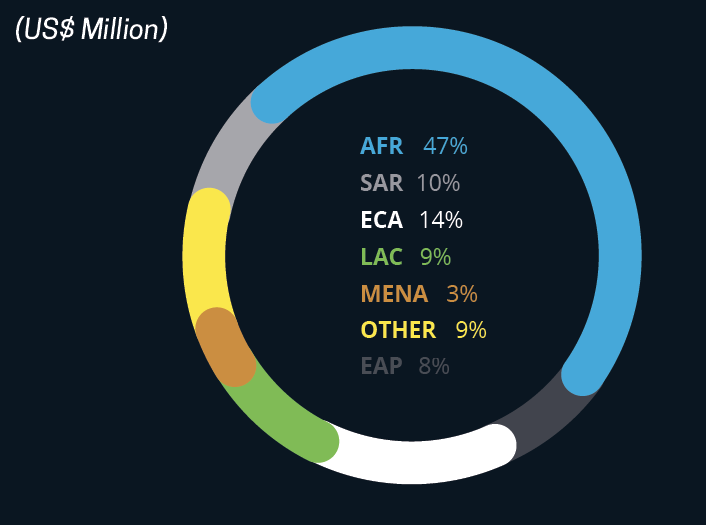
Key Trends in ESMAP's Portfolio
Sector-wide Engagements
Long-term, sector-wide engagements can be transformational
Sector Fundamentals
Getting sector fundamentals right can maximize finance for development
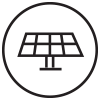
Energy Access
Comprehensive electrification approaches can help increase energy access
Renewable Energy
De-risking and improving public sector planning can incentivize private investors to enter the renewable energy sector
Energy Efficiency
A cross-sectoral approach to urban energy efficiency can improve city services and competitiveness
Energy Subsidies
Reforming energy subsidies is a political economy challenge
Data
Strong data can shape policies and mobilize investment
ESMAP AND CLIMATE CHANGE
RENEWABLE ENERGY
48 out of the 53 countries ESMAP supports have included RE as part of their NDCs:
- 34 specify solar energy as a priority in their NDCs
- 25 specify wind energy as a priority in their NDCs
- 12 specify geothermal energy as a priority in their NDCs
URBAN ENERGY EFFICIENCY
18 out of the 20 countries ESMAP supports have included EE as part of their NDCs:
- 10 specify EE cities as a priority
- 9 specify EE buildings as a priority
ENERGY SUBSIDIES
5 out of the 14 countries ESMAP supports mention fossil fuel subsidy reform: China, Egypt, India, Nigeria, and Vietnam
GOVERNANCE, MARKETS & PLANNING
Responding to Regional Priorities
Latin America and Caribbean
(LCR)
The region prioritizes strengthening energy policies, addressing energy equity and quality of access, enhancing the climate resilience of energy systems, scaling up financing and promoting a new public-private economy. The LAC regional study on Energy Markets helped generate new knowledge by presenting an integrated view of energy sector trends in LAC, energy markets performance, trends in emerging technological disruptions, and status of financial market
Africa (AFR)
The region’s priorities include strengthening utilities, regulation and power system planning, regional integration of infrastructure, renewable energy scale up (particularly hydropower and solar), grid and off-grid electricity, and facilitating private sector investment. In Kenya, ESMAP has helped to strengthen country capacity to transition to a competitive wholesale market and enhanced the Energy Regulatory Commission’s capacity to undertake a regulatory impact assessment.
Middle East and North Africa (MNA)
The region prioritizes improving governance, institutions and accountability, strengthening regulatory frameworks, subsidy reform and pricing, energy access, renewable energy, energy efficiency, and regional cooperation. ESMAP’s study on Securing Energy for Development in the West Bank and Gaza broke new ground by identifying options for diversifying energy supply to help West Bank and Gaza meet their growing energy demand by 2030 amidst high political and economic uncertainty
Eastern Europe and Central Asia (ECA)
The region’s priorities include improving access to reliable and efficient energy supply, designing sustainable tariff and subsidy reforms, scaling up energy efficiency and renewable energy, and strengthening legislation for the electricity and gas sectors. In Albania, ESMAP support for power market design helped establish a competitive, transparent, and price-efficient electricity market. This has helped attract investors for an upcoming private 280-MW merchant hydropower project
East Asia and Pacific (EAP)
Priority areas range from strengthening power sector governance, and creating competitive markets, to power and gas regulatory reforms, energy efficiency and variable renewable energy integration, and energy infrastructure. ESMAP helped Electricity of Vietnam(EVN), the major power utility in the country, to develop a comprehensive strategy and roadmap for unbundling and divesting its generation assets, with a view to creating a more favorable environment for private sector investment
South Asia (SAR)
Regional priorities include renewable energy, energy efficiency, access to energy, as well as regional integration. ESMAP informed India’s $240 million Andhra Pradesh 24x4 Power4All project in terms of upgrading information technology systems in utility companies and has also facilitated discussions on the overarching architecture for smart grid deployment
ENERGY ACCESS
Pace of progress on the sustainable energy goal on energy access fell short of what is needed to meet global objectives by 2030. Almost 10% of the world will still not have electricity access in 2030, while more than 28% will remain without access to clean cooking. Substantial acceleration of efforts and investments are needed.
In addition, the State of Energy Access Report (SEAR), found that in countries with low levels of electricity access, both grid and off-grid solutions are vital for achieving universal access but they must be supported by the right policies, regulations, and incentives.
ESMAP’s comprehensive approach encompasses strategies, which integrate grid extension, off-grid solutions such as mini grids, and systems to power individual homes and businesses in both rural and urban areas, including urban slums. It also helps countries to scale up access to modern and clean cooking solutions, including clean fuels.
In FY2017, the World Bank’s efficient, clean cooking and heating portfolio consisted of more than $130 million in IDA and IBRD lending and technical assistance. These programs are expected to reach 2.8 million households in 9 countries. Much of this lending has been leveraged by ESMAP’s work in Efficient, Clean Cooking and Heating (ECCH) which focuses on policy advice, strengthening the enabling environment for investment, and piloting innovative approaches to attract private sector funding to the sector
Bridging the Access Gap with Mini Grids
27 World Bank electrification projects under preparation or implementation in 23 countries include mini grids
$534M World Bank funds to support the mini grid components, leveraging an additional $830 million in co-financing for mini grids from governments and the private sector
1,000 New or hybridized mini grids by 2024, that will improve access to electricity for over 2.5 million people
Since its launch in 2015, the efficient, clean cooking and heating initiative:
$94M
informed investments in clean cooking through 5 World Bank projects which are EXPECTED TO REACH 1,074,000 HOUSEHOLDS
$13M
mobilized through the Inter-American Development Bank for projects in GUATEMALA, NICARAGUA, AND HONDURAS through the Central America Clean Cooking Initiative
Kenya
ESMAP’s five-day learning event on Upscaling Mini Grids for Low Cost and Timely Access to Electricity in Nairobi informed the emerging policy consensus on mini grids as a low cost, off-grid electricity option. In addition, the ESMAP report, Current Activities and Challenges to Scaling up Mini Grids in Kenya, informed the off-grid electrification component of the World Bank’s Electricity Modernization Project in Kenya and will benefit a forthcoming off-grid solar access project by identifying the challenges facing private mini grid developers in the country.

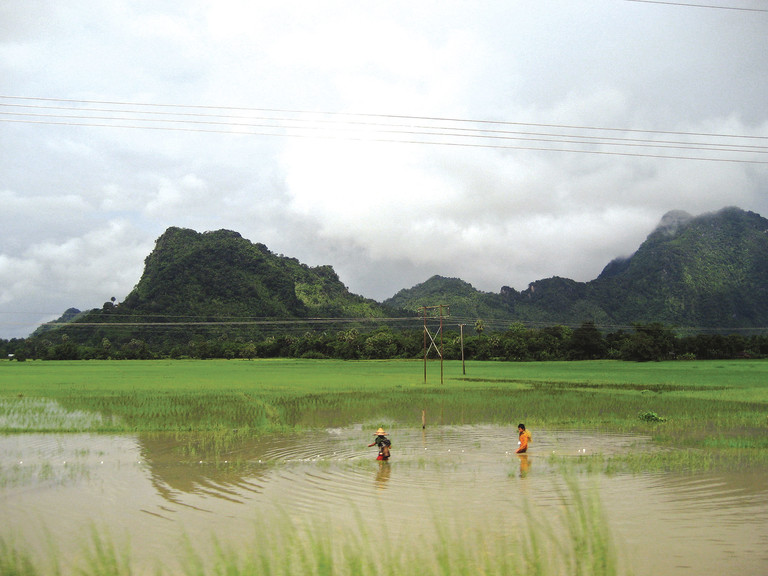
Myanmar
ESMAP’s analytical work on the role of mini grids to increase electrification rates, an assessment of informal mini grid operations, and a roadmap for scale-up, informed the implementation of the mini grid component of the World Bank $400 million National Electrification Project (NEP). The project is set to leverage $7 million in IDA funding and an additional $7 million from the Myanmar government to support the development of over 150 private sector mini grids. Already, the NEP is lighting up the lives of about 700,000 people in rural Myanmar. ESMAP has been a partner to Myanmar since the beginning of the government’s effort to provide electricity to its entire population. ESMAP also hosted a learning event on Upscaling Mini Grids for Least Cost and Timely Access to Electricity Services in Nay Pyi Taw.
From Lighting Africa to Lighting Global
Building on the success of Lighting Africa, ESMAP expanded its support to Lighting Global — a platform through which the International Finance Corporation (IFC) and the World Bank coordinate with Global Off-Grid Lighting Association (GOGLA), manufacturers, distributors, governments and other partners to develop the modern off-grid energy market.
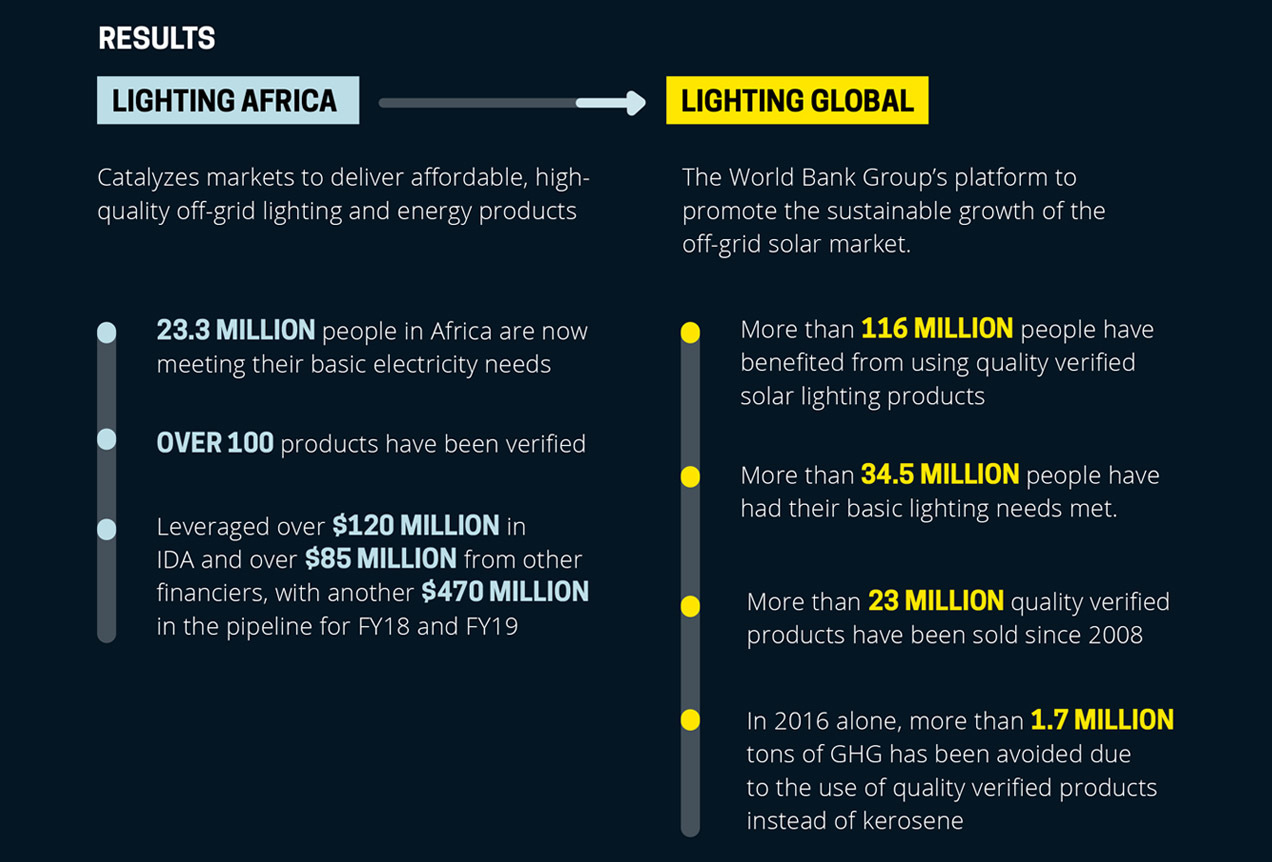
Lighting Global aims to lower investment risk for the private sector and help governments strengthen the enabling environment for accelerating off-grid electrification. ESMAP supports Lighting Global by engaging with governments through World Bank projects and policy dialogue.
RENEWABLE ENERGY
The investment needed to help countries transition to a low carbon, climate resilient development is in the order of trillions, rather than billions of dollars. Mobilizing public and private sector resources is crucial. ESMAP’s work in renewable energy focuses on de-risking exploration of geothermal resources to unlock financing for projects, assessing an d mapping of resource potential to help governments and commercial developers make informed decisions and carry out initial prospecting, integrating variable renewable energy into grid systems, and scaling up solar power.
Unlocking financing for geothermal energy
In FY2017 ESMAP’s Global Geothermal Development Plan (GGDP)
leveraged three new World Bank geothermal projects in Chile, Indonesia, and Turkey for a total of almost $460 million.
Changing the Course of Geothermal Development
From 1975 - 2011
the share of financing for geothermal energy exploration was only about 6% out of the
total multilateral financing.
From 2012 - 2017
the share of financing for geothermal energy exploration jumped to 29% — almost a
third of the total multilateral investment in the sector.
Since its launch in 2013
GGDP mobilized $250 million of concessional financing for geothermal exploration
activities. This is expected to leverage at least US$1.5 billion in public and
private capital.
Investing Where the Sun Shines and the Wind Blows
ESMAP’s Renewable Energy Resource Assessment and Mapping initiative helps countries understand their renewable energy resource potential to facilitate national planning, decreasing risks for developers, and reducing costs. In FY17, ESMAP continued its support to 16 World Bank projects. Indonesia and Madagascar completed small hydro mapping and Pakistan completed both biomass and solar mapping. All outputs were disseminated to decision-makers through workshops and outreach. Solar measurement campaigns were initiated in the Maldives, Pakistan, and Zambia. All measurement data from these projects is now available on the new ENERGYDATA.INFO platform, the World Bank Group’s repository for energy sector data and applications.
Mapping Renewables Potential Can Strengthen Private Sector Confidence
- Global Solar Atlas launched in January 2017 — a free, web-based tool that supports strategic planning and site identification
- High resolution solar maps for all 146 developing countries
- Over 60,000 site visits from around the world (as of June, 2017), with non-OECD countries representing 16 of the top 25
- Measurement data has been shared with International Renewable Energy Agency (IRENA )
- Set the stage for the launch of a new Global Wind Atlas in FY2018
The World Bank is seeing a surge of interest from our clients in solar power as a result of the dramatic cost decreases over the past few years. We hope that the Global Solar Atlas will help inform the crucial planning and investment decisions that will need to be taken over the next decade to shift to more sustainable forms of energy.
Integrating Renewable Energy into the Grid
ESMAP helps countries to increase the share of variable renewable energy (VRE) in their energy systems by ensuring that the grid can reliably evacuate and transmit power from renewable energy plants. Activities focus on grid modernization, adoption of new control and forecasting technologies, revamped business models for utilities, and updated policy and regulatory frameworks.
In FY2017, ESMAP informed 7 World Bank lending projects for $670 million and 5 country planning strategies, including support for grid code development in Cabo Verde, Morocco, Armenia, Ukraine, Myanmar and Bangladesh.
Partnerships and Knowledge
To further leverage resources, ESMAP maintains partnerships with the Global Sustainable Electricity Partnership (GSEP), Public-Private Infrastructure Advisory Facility (PPIAF), NREL, Clean Energy Ministerial, and the Children Investment Fund Foundation (CIFF).
An
ESMAP-PPIAF Partnership on Climate Change was established to help countries
transition to climate-resilient energy infrastructure. The joint support will leverage $2.5
million of co-funding from PPIAF over 5 years to build enabling environments that facilitate
deployment of variable renewable energy. In coordination with IFC, ESMAP also produced and
launched the Energy Storage Market Report which shows that energy
storage technology will become more accessible in emerging markets in the coming decade,
enabling a significant scale-up of renewable energy.
Deploying solar energy at scale
ESMAP is playing a central role in coordinating the World Bank’s response to solar scale up through collaboration with Scaling Solar.
- In Vietnam, ESMAP is developing a strategy to guide policy and planning and lay the groundwork for an investment project to help the country achieve its target of 12GW of solar PV capacity installed by 2030.
- In Indonesia, ESMAP helped prepare and deliver a Solar Auction Workshop in June 2017. The workshop laid the groundwork for planning a series of utility-scale solar PV auctions and to develop an implementation framework and roadmap for them.
- In Myanmar, ESMAP supported a workshop on floating solar to inform the use of this technology combined with hydropower plants in the country.
ENERGY EFFICIENCY
Cities consume more than two-thirds of global energy and produce about 70% of greenhouse gas (GHG) emissions. Buildings are also major consumers of energy and resources and account for about third of global GHG emissions. Making cities and buildings more energy efficient can help mitigate climate change and contribute to the achievement of the Sustainable Development Goals (SDGs), especially SDG7.
Through its work on Energy Efficient City Services and Energy Efficient and Sustainable Buildings, ESMAP collaborates with the urban, transport, and water sectors, as well as the International Finance Corporation (IFC) to help cities incorporate energy efficiency into their planning. ESMAP’s cross-sectoral approach has enabled the integration of energy efficiency in upgrading building resilience, and in public transport and water supply systems.
In FY2017, ESMAP supported technical assistance for projects in 12 countries, covering 19 cities. Some of these include Argentina (Buenos Aires), Brazil, China (Anshan, Fushun, Fuxin, Gaizhou, Metropolitan Shanghai, Shenyang), Kazakhstan (Almaty, Astana), Mongolia (Ulaanbaatar), Panama (Panama City), Ukraine (Chernihiv, Dnipro, Kamianets-Podilsky, Kherson, Kharkiv, Mykolaiv, Odessa, Ternopil), and Vietnam.
TRACE Continues to Leverage Investment
Building on the lessons learned from the successful engagement with Mexico, TRACE diagnostics for Uzbekistan’s Kagan and Yangiyul cities laid the ground for an upcoming World Bank urban development project to scale up support to all 28 regional cities in the country. Similarly, TRACE diagnostics, complemented with action plans and pre-feasibility studies informed a $71 million Integrated Urban and Tourism Development Project in Albania, which includes a $750,000 investment for energy efficient street lighting retrofits in three cities. An updated version of the software was also completed in FY2017.
Knowledge in Energy Efficiency
- Six case studies and a synthesis report on Proven Delivery Models for LED Public Lighting share real-life experiences across cities.
- Assessing and Measuring the Performance of Energy Efficiency Projects is now offering practical guidance on how to implement monitoring and verification systems.
- An e-learning course on Energy Efficiency in Cities developed in collaboration with the World Bank Climate Group and the Online Learning Campus aims to help practitioners and policy-makers to design and implement city programs.
In Argentina, ESMAP is supporting the integration of energy efficiency in the $200 million World Bank Metropolitan Buenos Aires Urban Transformation Project aimed at improving housing and electricity access for the city’s urban poor.
ENERGY SUBSIDY REFORM
Subsidies to fossil fuels constitute a SIGNIFICANT FISCAL BURDEN on government budgets and are a barrier to sustainable, climate-smart development. They encourage overuse of fossil fuels, and deter private investment in renewables and energy efficiency.

In 2016, global subsidies for fossil fuels amounted to $260 BILLION — compared to $140 billion for renewables.

FOSSIL FUEL SUBSIDIES ARE KEY DRIVERS OF GREENHOUSE GAS EMISSIONS. In 2014, approximately 13% of global CO2 emissions were linked to the use of subsidized fossil fuels.
Energy Subsidy Reform Technical Assistance Facility:
ESMAP’s Energy Subsidy Reform Technical Assistance Facility is a $20 million initiative that supports governments in their reform process. In FY2017, the facility allocated more than $3 million for country-specific technical assistance activities in 7 countries: Belarus, Brazil, India, Kyrgyz Republic, Myanmar, Nepal, and Ukraine. It also completed regional activities in Central America (Costa Rica, El Salvador, Guatemala, Honduras, Nicaragua, Panama) and the Southeast Europe and Western Balkans (Albania, Bosnia and Herzegovina, Kosovo, F YR Macedonia, Montenegro, and Serbia). Work on China, Egypt, Iraq (incl. Kurdistan Regional Government), and Uzbekistan is currently focusing on assessing poverty, economic and social impact of reform, and public awareness campaigns, among others.
Since 2013, the facility has allocated $13 MILLION for technical assistance to 24 COUNTRIES, through 41 ACTIVITIES. This work has informed $4.5 BILLION in World Bank lending projects with subsidy reform components.
Long-term, Comprehensive Support Ensures Sustainable Reforms
Egypt
ESMAP technical assistance had previously helped Egypt slash energy subsidies. Building on this success, an analysis of the economic impacts of reform and support for citizen engagement and communications enhanced the sustainability of subsequent tariff increases. The reduction in subsidies allowed for increased budgetary spending on health, education, and social protection. It also improved the business environment, which has helped to attract private capital to the sector, as illustrated by a large private financing pack age prepared by the IFC for 13 solar plants.
Ukraine
ESMAP’s support in FY2017 built on the successes of previous engagements that helped the government increase tariffs, improve the financial viability of the gas sector, and increase the number of households covered by the social protection system. To sustain these reforms, ESMAP drew on the World Bank’s expertise across several sectors to develop a communication strategy, analyze the impacts of reform, and share knowledge on the design and management of social assistance programs. This work directly supported a $500 million World Bank development policy loan (DPL) to boost Ukraine’s reforms in governance, business environment, energy, and social assistance.
Iraq
Building on previous work, ESMAP analyses of the cost of power services and the economic impact of subsidy removal (oil, gas, and electricity) informed the design of electricity subsidy reduction components in two consecutive World Bank DPLs totaling $2.6 billion. Subsequently, in 2016, the government announced an increase in electricity tariffs from an average of $0.017 per kWh to $0.0811 per kWh. The current support is expected to result in a road map for full cost recovery and improved service delivery.
Western Balkans
ESMAP analysis is guiding the World Bank’s policy dialogue, technical assistance, and
financing in the energy sectors of Albania, Bosnia and Herzegovina, Kosovo, FYR Macedonia,
Montenegro, and Serbia. A key output was a financial analysis of the power sector in each
country, which found that below-cost recovery tariffs account for approximately 70% of
identified financial gaps. As a result, designing new tariff systems is now a core aspect of
the dialogue.
SEFORALL KNOWLEDGE HUB
Tools to Influence Policies, Mobilize Investments
According to the Regulatory Indicators for Sustainable Energy (RISE) 2017, reaching the SEforALL goals will require almost tripling the historical annual investment flows to about $1 trillion. Countries will need to embrace an enabling environment that attracts all forms of investment — public and private. ESMAP launched three comprehensive data and analytical tools to help governments craft policies that attract investments and track progress toward SDG7.

Regulatory Indicators for Sustainable Energy (RISE)
RISE is the first global policy scorecard of its kind, grading 111 countries in three
areas: energy access, energy efficiency and renewable energy.

Global Tracking Framework (GTF)
The Global Tracking Framework is a global dashboard to register progress on energy
access, energy efficiency and renewable energy at country level.

Multi-Tier Framework (MTF)
MTF goes beyond the traditional binary approach to measuring access to energy — either having access or not — to capture multiple dimensions of access, including reliability and affordability.

State of Electricity Access Report (SEAR)
SEAR is a comprehensive report that examines the critical role of energy in achieving the SDGs, providing a snapshot of the status of electricity access, based on the Global Tracking Framework.
The world is not moving fast enough to reach its universal electricity access goal by 2030. A substantial acceleration of efforts and investments are needed to achieve this objective.
Connecting the Expertise of More than 40 Partners
Partnerships lie at the heart of ESMAP’s support to the SEforALL knowledge hub. The work of the Knowledge Hub would not have been possible without the collaboration of several international organizations, NGOs and bilateral and multilateral agencies.
SEforALL Knowledge Hub Comes into Full Play in Kenya

SEAR: Increasing Access to Clean Cookstoves
An impact evaluation study found that only 52% of the population in the target areas had access to an improved stove. It also found that a direct subsidy or payment installment plan would help reduce households’ financial burden and boost stove adoption.
GTF: Monitoring Progress Against SDG7
2012-14 data showed that Kenya still had a long way to go to electrify its population even though it is one of the leaders in renewable energy. The data has strengthened the dialogue on access to electricity and clean cooking.
RISE: Understanding the Enabling Environment for Energy Investment
RISE found that Kenya made great strides in grid densification and extension, and concluded that the country built a strong enabling environment for increasing energy access. To help Kenya scale up grid extension and mini grids, the World Bank has supported the development of mini grid regulations, and plans to implement an innovative public-private-partnership mini grid framework, as a part of an upcoming World Bank project.
MTF: Targeting Interventions to Reach the Remote Communities
MTF data from 14 underserved counties in the northern part of the country provided critical information on energy access, socioeconomic characteristics, affordability, and consumption. These counties will be covered by an upcoming World Bank investment project.
SMALL ISLAND DEVELOPING STATES
ESMAP has been focusing on Small Island Developing States (SIDS) because of their unique sustainability challenges. SIDS often rely heavily on imported fossil fuels for most their energy needs, especially for transport and electricity generation. Transitioning from fossil fuels to renewable energy will help SIDS secure their energy supply and create economic opportunity.
Many SIDS have taken steps towards energy independence through new partnerships, new investment, and innovative technologies, and have enacted energy plans with bold targets. In FY2017, ESMAP drove the continued development of renewable energy sources in SIDS with an active portfolio of $12.5 million. The most impressive results stemmed from geothermal development activities.
SIDS by the Numbers (FY2017)
$22M SIDS DOCK – an initiative funded by Denmark and Japan
6 country specific activities in Cabo Verde, Dominica, Sao Tome and Principe, Saint Lucia, Tuvalu, and Vanuatu
3 regional activities in the Pacific, Caribbean, and Eastern Caribbean
$99M leveraged in 3 World Bank projects, of which $67 million directly supports geothermal development
